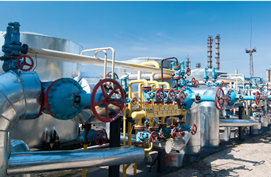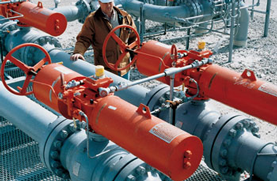
This is a topic of debate very often between EPC buyers, design engineers and End users in the downstream manufacturing plants. many a time valve manufacturers find themself at the wrong end for complaints of faulty products especially during project supply and commissioning of a new plant. If you can answer a few quick questions as the ones below that would help.
1. Where the valve is to be used, what function you want to perform?
2. What are the pressure/temperature requirements?
3. What kind of fluids will be in line?
4. What size is the line?
5. Are the conditions moderate or extreme?
6. How much room have you got for valve stems/handles?
What are the service requirements, are the valves to be regularly dismantled for cleaning? Is the installation permanent, or likely to be cut into frequently?
Here are some basic guidelines for valve selection:
Where the valve is to be used, what function you want to perform?
1. Starting and Stopping flow: Gate, Ball and Butterfly Valves are the most common form of shut-off valve, with ball and even butterfly valves rapidly becoming the primary choice due to the ease of automation and fast shut-off abilities, and in the case of ball valves the barest minimum of flow restrictions. We are often supplying ball and butterfly valves fully actuated, as plants of today become more and more automated, and are often now run by computers and the flick of a switch.
2. Regulating Flow: Regulating or throttling flow is most commonly done with the use of a globe valve, and to a much lesser extent an angle valve. The seat design forces the flow evenly around a disc or plug arrangement that enables a closer regulation of flow. Globe valves are often used for the control of steam. Your garden tap is a very common and basic form of a globe valve design.
3. Preventing Back Flow: This is the function of a check valve; it prevents flow reversal in piping, a primary cause of water hammer. Check valves most commonly are swing checks, normally used with gates and ball valves, and lift check or spring checks, which are normally used with Globe and Control type valves.
4. Regulating Pressure: Pressure Regulators and Control Valves are used to reduce incoming pressure and maintain it at a required service pressure. Fluctuations to the inlet pressures of a pressure regulator will not affect the outlet pressure for which it is set at.
5. Relieving pressure: These are known as Safety Valves, normally used for steam, air, and gases, and Relief Valves, usually used for liquids. These are normally spring loaded valves which open automatically when the pressure exceeds a set limit. They can either vent to atmosphere or to other piping. Excessive pressures in something like a Boiler could cause major damage, if a relief valve was not used.

 Hot new
Hot new Hot new
Hot new